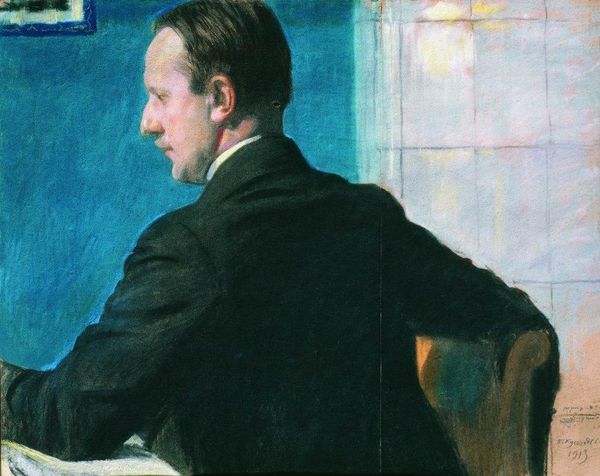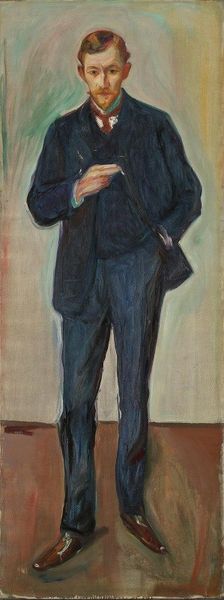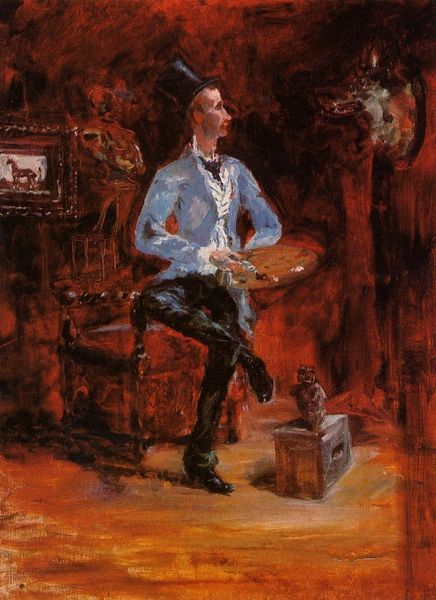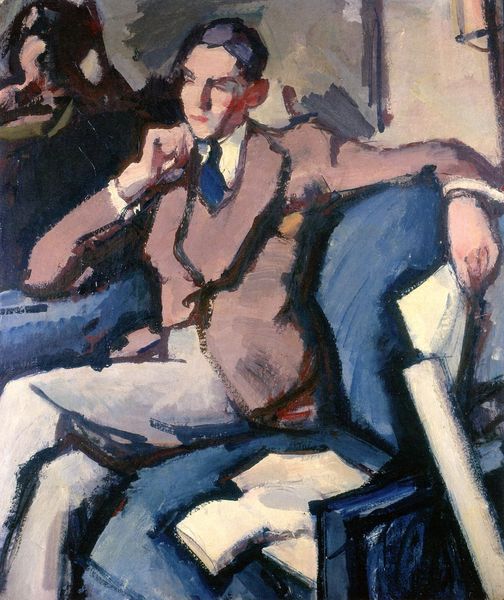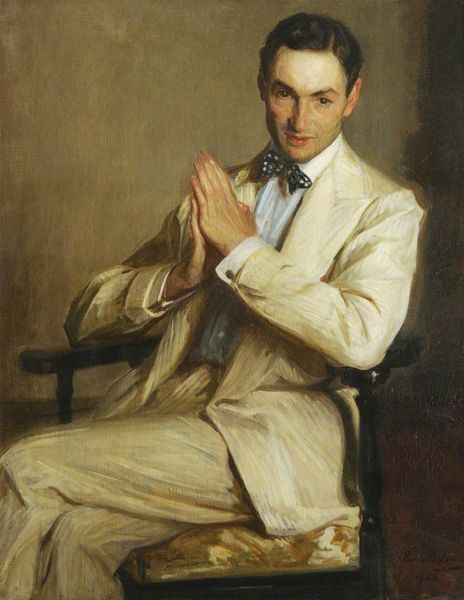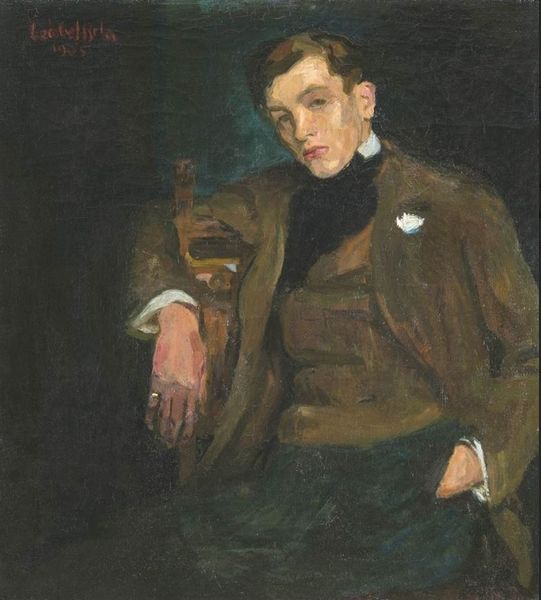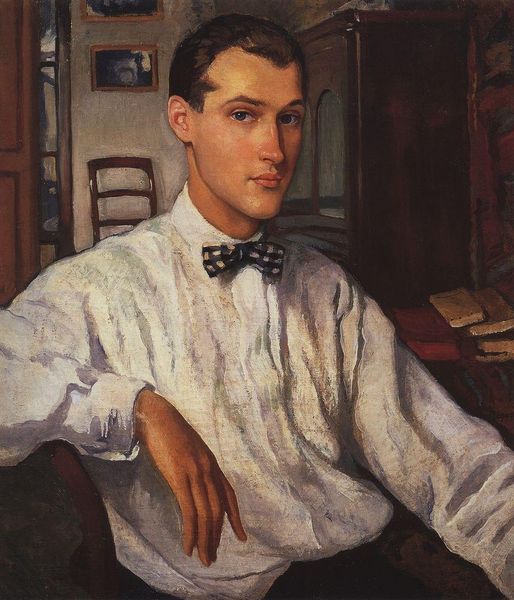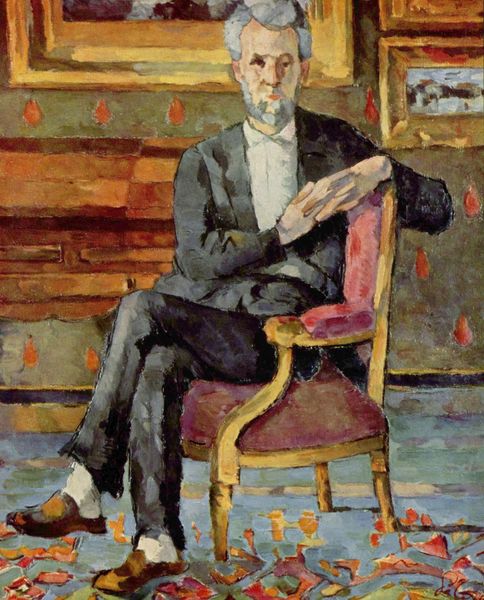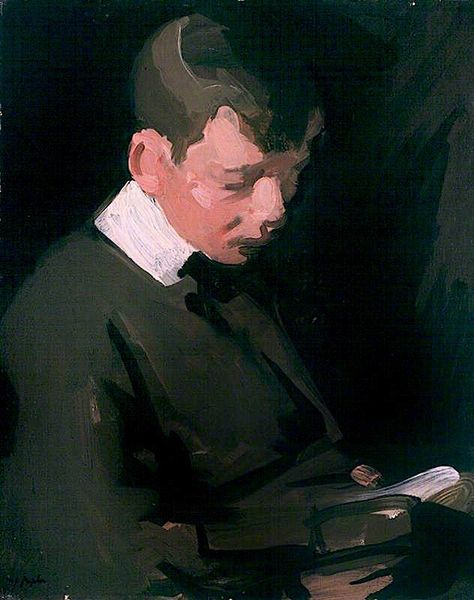
painting, oil-paint
#
portrait
#
painting
#
oil-paint
#
figuration
#
intimism
#
russian-avant-garde
#
realism
Copyright: Public domain
Editor: This is Boris Kustodiev's "Portrait of the Composer D.V. Morozov," painted in 1919 with oil on canvas. It strikes me as a rather intimate and intense portrayal; Morozov seems lost in thought or perhaps transported by the music. What do you see in this piece, particularly considering the year it was made? Curator: The year is crucial, isn't it? 1919, a period of immense social and political upheaval in Russia. Kustodiev, despite his own physical suffering and the wider societal turbulence, chooses to portray Morozov in this almost bourgeois setting – the piano, the sculpture, even Morozov's formal attire. It reads to me as an interesting tension: this longing for a refined past amidst a revolutionary present, raising questions about art's role and artists in such tumultuous times. Does it suggest Morozov's detachment from the revolution, or something else entirely? Editor: I see what you mean. The intimacy of the scene could be read as a kind of retreat, or perhaps a focusing on the self in a time of chaos. It makes you wonder about the responsibility of artists during revolutions. Curator: Precisely. And Kustodiev was himself navigating difficult territory as a portraitist during a time when artistic focus shifted toward abstraction and utilitarianism. This piece feels like a statement, a conversation between artistic traditions and emerging socio-political ideologies. Where does personal expression fit into revolutionary ideology? How is Morozov implicated in these power dynamics? Editor: It's interesting to consider the painting not just as a portrait but as a document of the era's conflicting values. It really encourages us to consider the complexities of art's role in reflecting and shaping history. Curator: Exactly. The power lies not only in the subject, but also in what the artist chooses to show, and more importantly, what he chooses to omit. Considering this painting alongside the political landscape of 1919 provides crucial context for unpacking its layers of meaning. Editor: That has opened up so much to think about that I had not considered before. Thank you.
Comments
No comments
Be the first to comment and join the conversation on the ultimate creative platform.
